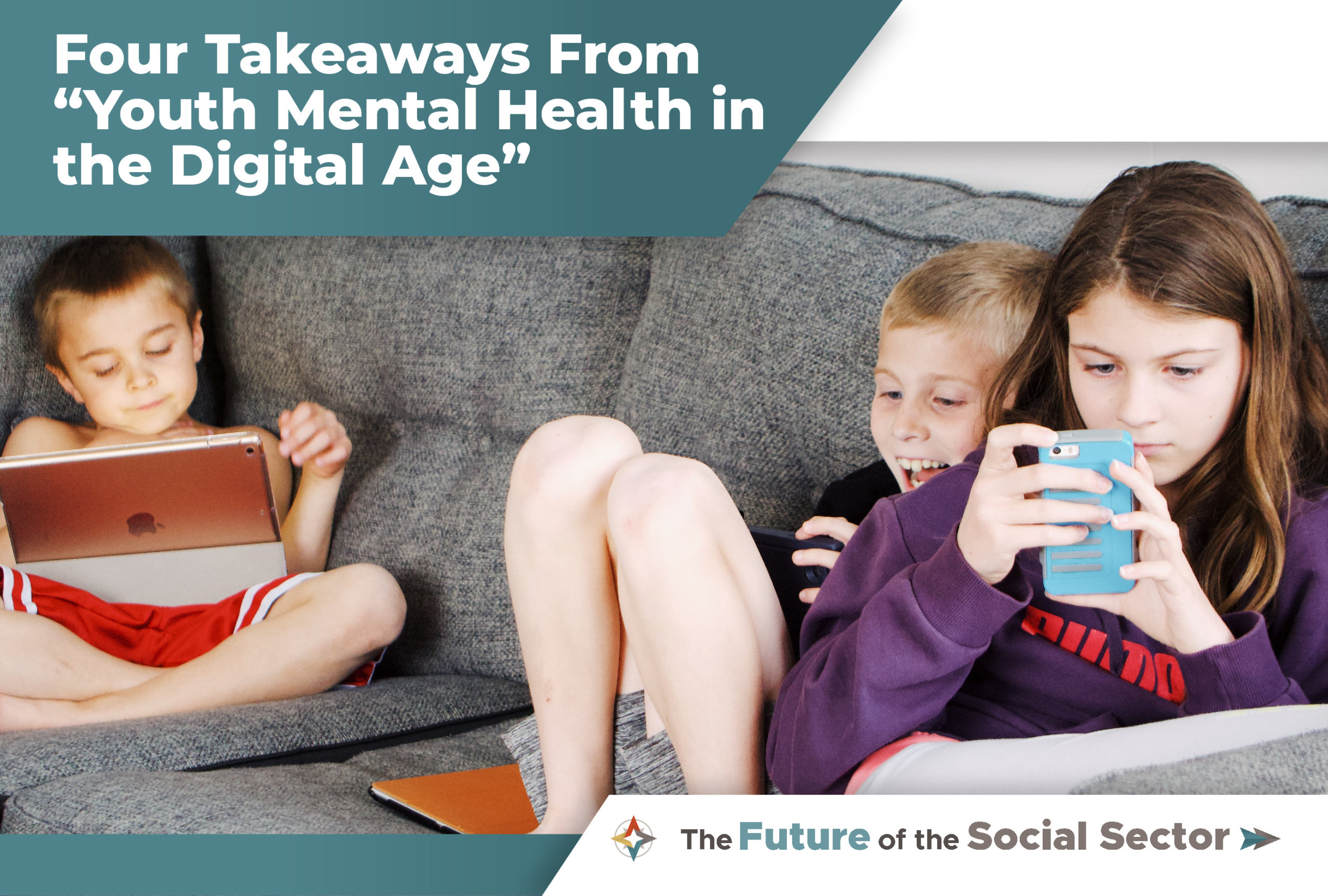Four Takeaways from “Youth Mental Health in the Digital Age”

Young people are experiencing an acute mental health crisis, with a surge in youth anxiety, depression and other mental health disorders. According to a recent CDC report, one in three teenage girls seriously considered attempting suicide in 2021, and nearly six in 10 teen girls and seven in 10 LGBTQ+ adolescents reported persistent sadness and hopelessness. The youth mental health crisis was exacerbated by the pandemic, but its origins began well before.
The ubiquitous presence of the internet, social media, video games, and smart phones have contributed to mental health challenges among the young. Social media platforms like Instagram, Snapchat, and TikTok are engineered to capture the attention of young people and keep them online, using a business model in which increased user engagement translates directly to advertising profits. As part of its Future of the Social Sector series, Arabella Advisors brought together expert panelists to examine social technology’s role in driving youth mental health issues. They also explored the potential for a new kind of healthy digital technology to be part of the solution to the crisis. The panel included Deepti Doshi, co-director of New_Public; Pooja Mehta, senior policy associate at Inseparable; and David Ball, global head of SecondMuse’s Health and Social Tech portfolio. Shelley Whelpton, a senior managing director at Arabella, moderated the panel.
The conversation revealed insights about the depths of the crisis and highlighted opportunities for funders to support solutions that address youths’ current needs and prevent future harm. Here are four main takeaways from the webinar, which you can view here.
- The ubiquity of social media and screens bring a constant digestion of information and social comparison—which are having adverse impacts on young people. David explained the three main ways in which social media and screens are impacting youth well-being: young people are experiencing a decline in the number of in-depth and meaningful connections; they are getting fewer opportunities to develop social and emotional skills that require in-person interaction; and they may have fewer opportunities to access off-line supports.
- There is a need for both in-person and digital strategies for supporting youth wellness and mental health that meet young people where they are, whether in school or online. Pooja mentioned that there are many opportunities at the local, state, and national levels to develop and implement such strategies. Philanthropists can support legislative campaigns, such as the Hopeful Futures Campaign, which seeks to expand mental health services and education in schools. National organizations like 4-H, the Boys & Girls Club, or the Girl Scouts have the capacity to reach young people on a national scale with mental health and wellness programs after school or during out-of-school time.
- We must create alternative digital communities that better foster youth well-being and are designed for the public good. The big social media companies are focused on maximizing their shareholders’ profits, which means delivering growth and engagement to advertisers. Advocacy to improve and reform these platforms is important—it is in the platforms’ interest to ensure they provide healthy spaces for young people—but we should not ignore the reality that these are for-profit companies and will resist changes to their products and practices that undermine their ability to maximize advertising revenue. It is therefore imperative to create alternative digital spaces that prioritize youth well-being and that are designed for the public good—the digital equivalent of libraries and parks. Deepti put the question succinctly: “How can we take the best practice of public urban design and bring that into the digital world, where young people in particular are spending more and more time?”
- Philanthropy has a critical role to play in providing risk capital to entrepreneurs who are seeking to create new kinds of healthier, digital spaces that have plurality, cohesion, and well-being as their North Star. There is an incredible need for innovation right now and there are entrepreneurs who want to solve this problem but don’t yet know what the precise business model is—they need patient risk capital that philanthropists can provide. As Deepti put it, “Philanthropy can play the role of taking early risks and provide that capital to de-risk these ideas. By giving patient and flexible capital, philanthropists can give entrepreneurs the leeway and the runway to solve the problem in a sustainable way.”
